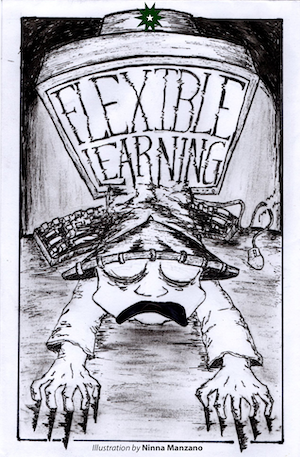
Students and educators have toiled under the online learning setup for more than a year now, and it is beginning to look as if authorities have completely turned their backs on going back to fully face-to-face classes. The Commission on Higher Education (CHED) recently announced a “flexible learning” scheme, a policy which will allow Higher Education Institutions (HEIs) to “mix-and-match” teaching methods to suit the ongoing pandemic. The initiative hopes to combine digital and non-digital technology in learning, with CHED even claiming that this setup does not necessarily need an internet connection.
Critics slammed the move, especially since the commission believes that this scheme will “continue in school year 2021 and thereafter.” There are various factors that should be considered before implementing this policy in the years to come: how learning is evaluated, the capacity of teachers and students for flexible learning, and the digital divide in the country. However, with the flexible learning setup, the learning process has changed, thus deeming it would be vital to revisit how institutions evaluate their students.
The decision of CHED to resort to flexible learning calls to question their perception of the experience of the average Filipino student is problematic because it exacerbates the huge digital divide. Although it is easy to say that this crisis provides an opportunity for innovation, the lack of structural mechanisms such as decent internet infrastructure exacerbate the inequalities within our educational system, exacerbating an already huge gap in accessibility.
Though recent policies such as the Free Internet Access in Public Places Act ensure free internet service in public areas, this is still insufficient as a limited number of Filipinos are connected to the internet and people cannot go outside to connect to these public places because of health risks amid the pandemic. According to a survey from the Social Weather Stations, at least 42 percent of students do not have any devices for flexible learning, while at least 32 percent do not have access to the internet. A band-aid solution solves nothing, perhaps only aggravating the present flaws.
While there may have been government investments in technology, training, and facilities, these are not enough to ensure that flexible learning would be effective for students. CHED must proactively reevaluate its policies and strategies through consultations with various stakeholders in the field of academics and education; a non-participatory relationship through a top-down approach will fall short of any resolution.
How we respond, therefore, to the needs of students and teachers should take into consideration what is needed and not what is merely convenient or easy. It is no exaggeration to say that higher education molds the future of our country. We must act, then, to ensure that the compromises we make and accept will provide a fair learning environment for all Filipinos.
